




For the first part of the project, I started an empty grid with car as the
topic. After I further limited the topic to the sports car, I brainstormed all
possible elements and constructs for it. Figure 1-1 shows the main display of
these elements and constructs.
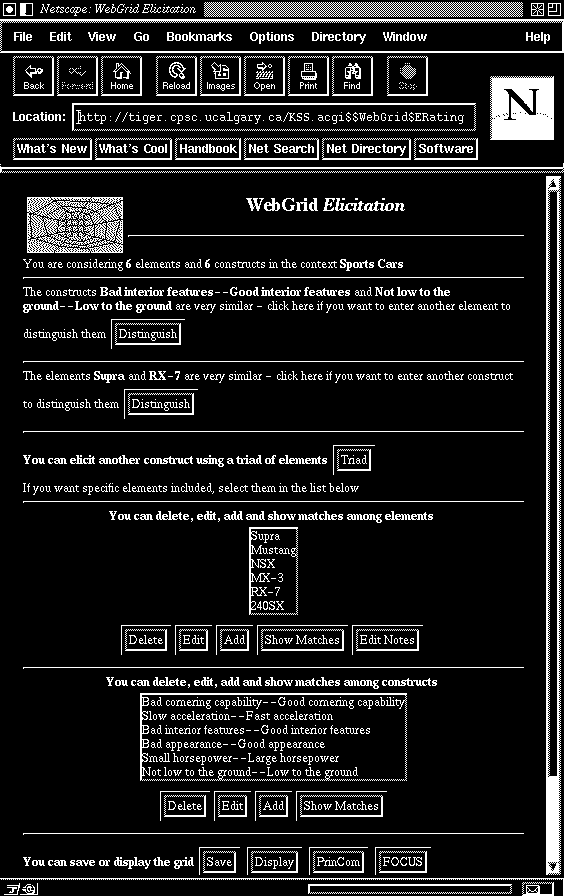
Figure 1-1
After pressing the "Display" button, the matches between elements and constructs are shown in a grid
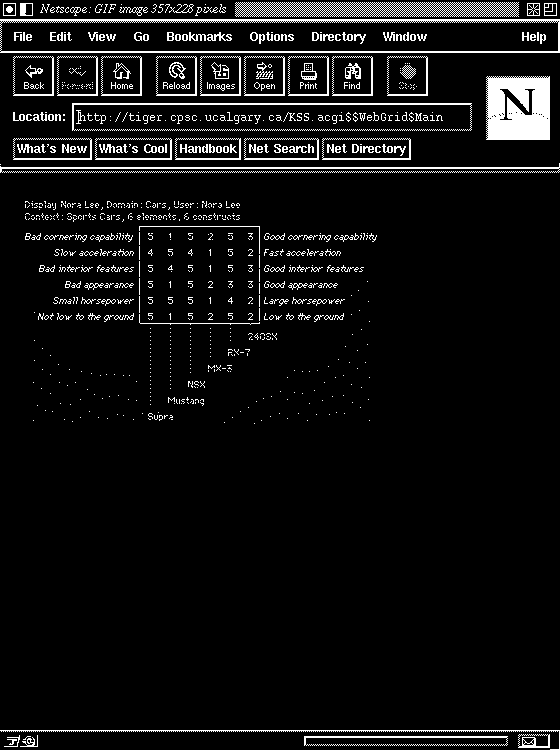
Figure 1-2
In Figure 1-3, the principal components analysis shows that two clusters of related constructs are typified by "slow acceleration--fast acceleration" and "good cornering capability--bad cornering capability" with an isolated construct "RX-7--non RX-7", raising the issue RX-7 to be "fast acceleration" and "good cornering capability".
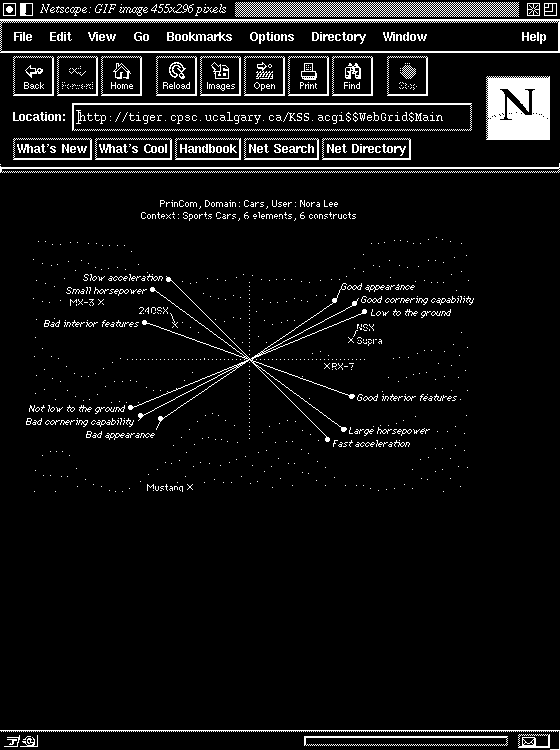
Figure1-3
From Figure 1-4, a cluster analysis grid for proximity between similar elements and similar constructs is shown. The constructs "slow acceleration--fast acceleration" and "small horsepower--large horsepower" are related, as well as the elements "RX-7", "Supra" and NSX".
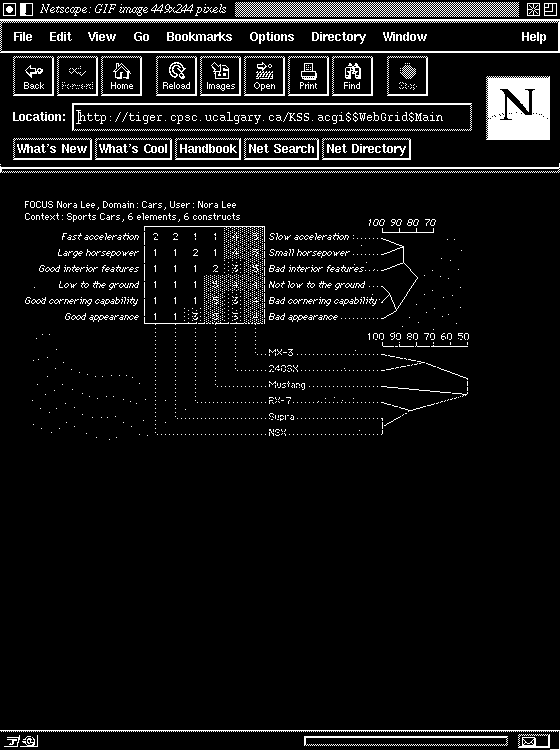
Figure 1-4
After the first exploration on the WebGrid, I found out that this program is not user friendly. The terms it uses are quite difficult to understand. I had no idea of what should be filled in the fields. In Figure 1-5, I thought the "Name" field indicating that I should fill in "car" rather than my name. I was also confused of what "Domain" and "Context" fields meant. I did not realize that it is not necessary to fill in all fields, like "Element" and "Construct". Help function did not give too much help on it. This only complicated the program further. Moreover, this program did not function well. "Display", "Princom" and "Focus" buttons suggested that they were three different functions, but they seemed to give the same outputs. So I tried to reload the program and repost form data, it finally gave me a matching display, cluster analysis and principal components analysis.
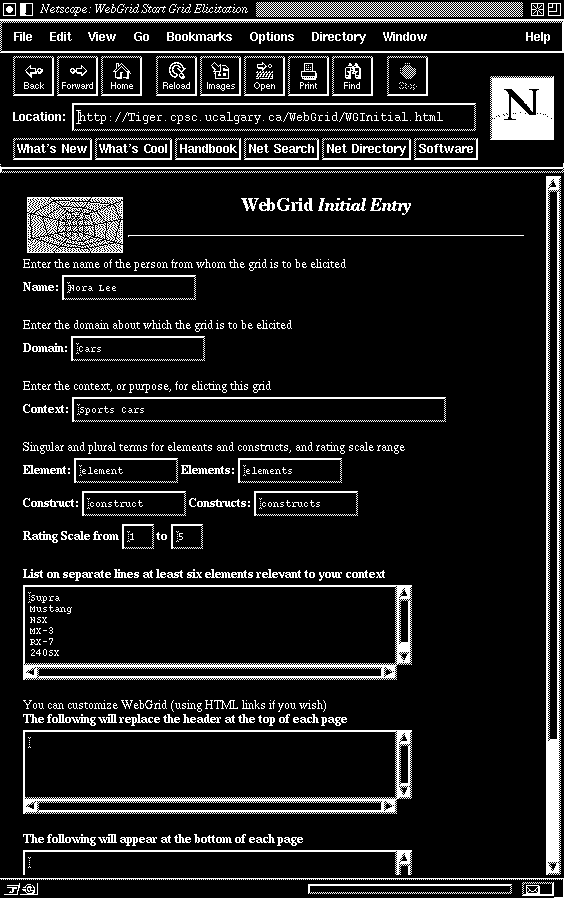
Figure 1-5
In the second part of the project, I brainstormed for any possible constructs based on CPSC 547 topics. Figure 2-1 and Figure 2-2 show the matching displays for these constructs.
 Figure 2-1
Figure 2-1
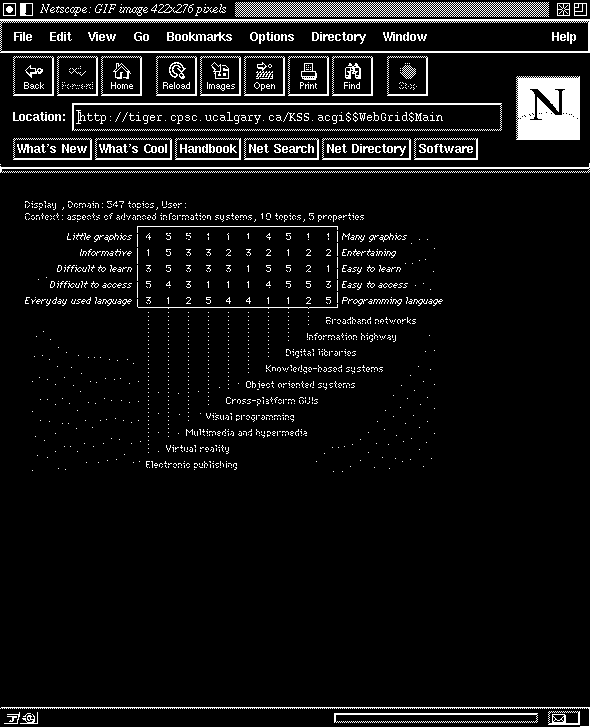
Figure 2-2
In Figure 2-3, the spatial map shows that two clusters of related constructs are typified by "difficult to access--easy to access" and "easy to learn-- difficult to learn" respectively, with an isolated construct "Knowledge-based systems--non Knowledge-based systems". This raises an issue that Knowledge-based systems is seen to be "easy to learn" and "easy to access".
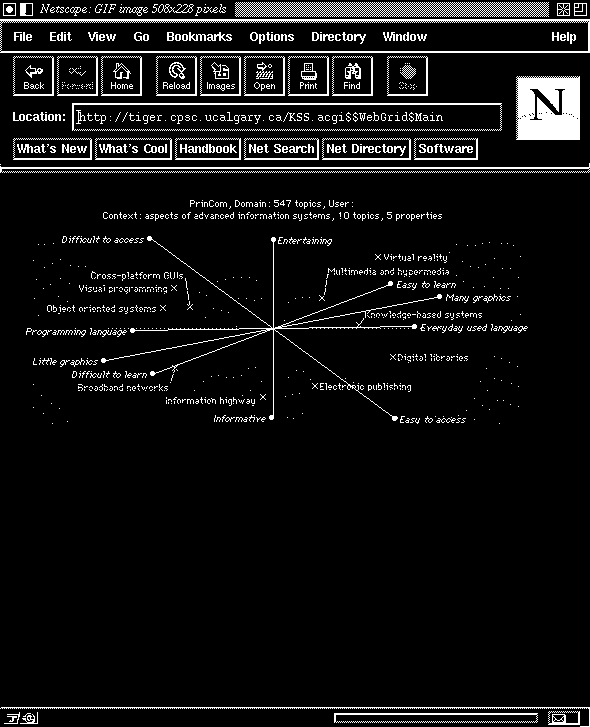
Figure 2-3
In Figure 2-4, the hierarchical structure shows that constructs "programming language--everyday used language" and "easy to learn--difficult to learn" are related, as are the elements "Visual programming" and "Cross-platform GUIs".
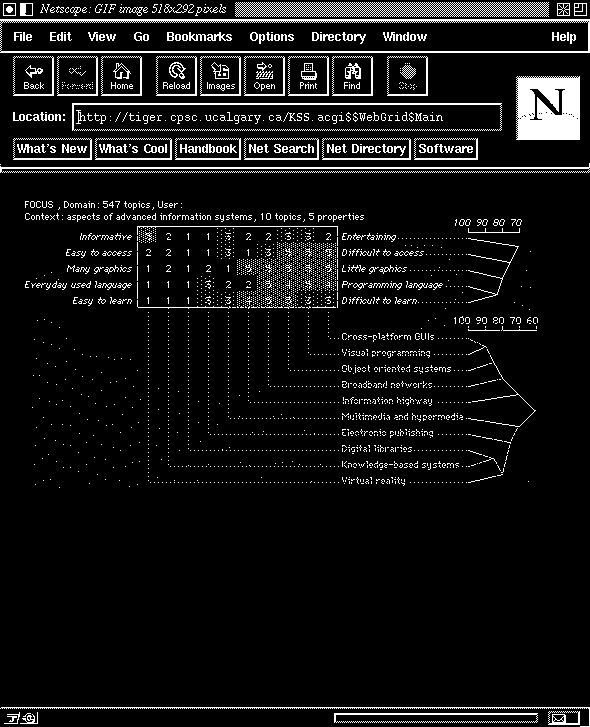
Figure 2-4
After comparing Figure 2-4 with Figure 2-5, it shows that terminologies used in these two figures are quite different. My terminologies are general while the terminologies used in the original grid are specific, eg. "difficult to access--easy to access" vs. "development tool--application". The constructs shown in Figure 2-5 "easy to access--difficult to access" and "many graphics--little graphics" are related, as well as the elements "Digital libraries", "Virtual reality", "Cross-platform GUIs" and "Electronic publishing".
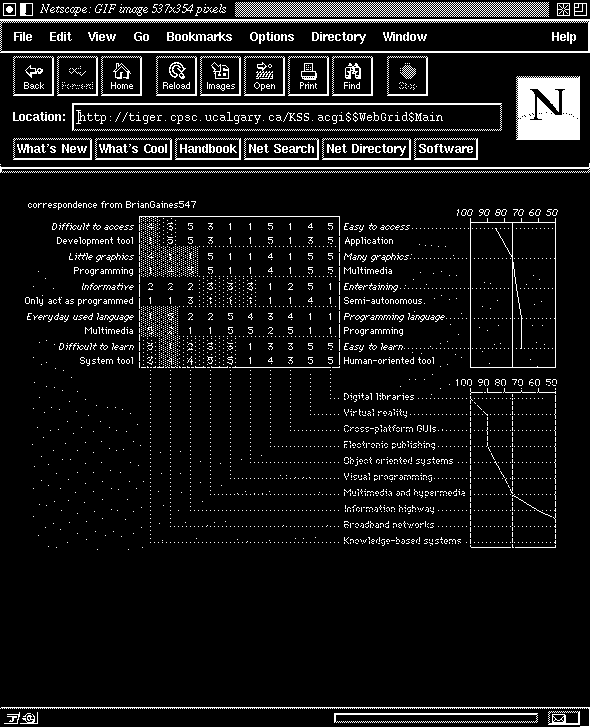
Figure 2-5
Figure 3-1 and 3-2 show the constructs and elements in the topic of "An Overview of the Information Highway" in a matching display for the last part of the project.
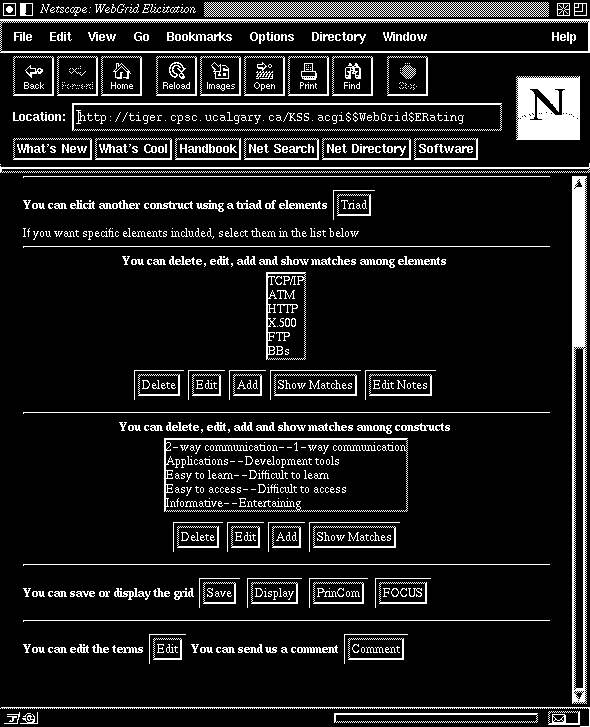
Figure 3-1

Figure 3-2
In Figure 3-3, the spatial map indicates that two clusters of related constructs are typified by "entertaining--informative" and "2-way communication--1-way communication" respectively, plus an isolated construct "applications--development tools". This raises an issue that "Applications--Development tools" are "2-way communication" and "entertaining".
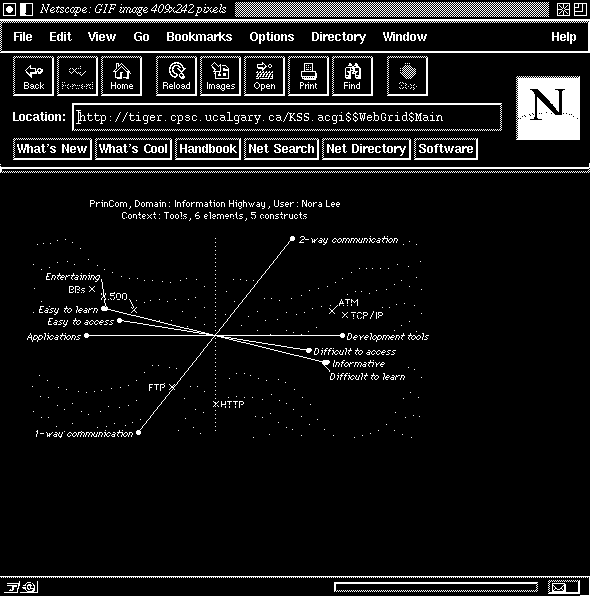
Figure 3-3
In Figure 3-4, the hierarchical structure shows that the constructs "difficult to learn--easy to learn" and "information-entertaining", and elements "BBs" and "X.500" are related.

Figure 3-4
